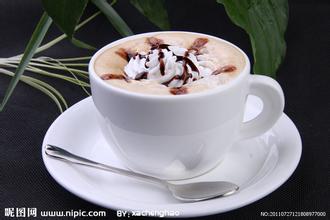Introduction to the quality characteristics of Sumatran Coffee Bean Flavor description treatment
Sumatra lindong coffee beans
Arabica saplings were first introduced to Ceylon (present-day Sri Lanka) and Indonesia by the Dutch in the 17th century. In 1877, a massive disaster struck the Indonesian islands, and coffee rust destroyed almost all the coffee trees. People had to abandon Arabica, which had been in business for many years, and imported Robusta coffee trees from Africa. Indonesia today is a major coffee producer. Coffee is mainly grown in Java, Sumatra and Sulawesi, with Robusta species accounting for 90% of total production. Sumatra mantenin is a rare arabica species. Planted on hillsides between 750 and 1500 meters above sea level, the mysterious and unique Sumatra species gives Mantenin coffee its rich aroma, rich taste, intense flavor, and hints of chocolate and syrup.
Mantenin coffee beans have large particles, hard beans, easy to appear defects in the planting process, usually through strict manual selection after harvest, if the control process is not strict enough, it is easy to cause uneven quality, plus different roasting degrees will also directly affect the taste, so it becomes a controversial single product. Mantelin has a strong taste, with rich alcohol and rich and lively movement, not astringent or sour, alcohol and bitterness can be fully revealed. The appearance of the mantling beans is arguably the ugliest, but coffee fans say that the uglier the sumatra beans, the better the taste. The mellower and smoother the mantling coffee is considered to be the most mellow coffee in the world. When you taste the mantling, you can feel the obvious lubrication on the tip of your tongue. It also has a lower acidity, but this acidity can also be clearly tasted. The jumping acid is mixed with the most intense aroma. Let you easily feel the lively factors in the mild fragrance. In addition to this, the coffee also has a light earthy aroma, which some describe as herbaceous. Sellers often label Lintong Lindong and Mandheling Mandheling coffee as dry processed. In fact, the pulp is often separated from the coffee seeds by a variety of mixing modes, more commonly a backyard wet treatment. Clever farmers put freshly picked coffee cherries into a crude peeling machine assembled from scrap metal, wood and bicycle parts. The peeled, sticky beans are then fermented overnight in plastic woven bags. The next morning, wash off the soft, fermented pulp and stickiness by hand. The silver-coated coffee is pre-dried on a sheet in the front yard and sent to a middleman's warehouse where the silver is removed and further dried. Finally, the coffee is trucked to Medan Port (capital of Sumatra) for the third and final drying. It has also been reported that in other Mandheling regions, after removal of the pericarp, the mucilage is allowed to dry and adhere to the beans, as is done in Brazil with semi-washing. After that, the dried slime and silver skin are removed by machine. And finally, the same two-stage drying process, first at the middleman's warehouse and then at the exporter's warehouse in Medan.

Important Notice :
前街咖啡 FrontStreet Coffee has moved to new addredd:
FrontStreet Coffee Address: 315,Donghua East Road,GuangZhou
Tel:020 38364473
- Prev

Introduction to the quality characteristics of coffee bean flavor description treatment in Honduras, a highland coffee producing country
Honduran coffee beans introduce the granules of Honduran coffee beans are large in shape, uniform in size, uniform in color and glossy. In order to facilitate harvesting, farmers will prune the coffee trees to no more than 150 centimeters, because if they grow too high, they have to set up ladders to pick, which is not only time-consuming, but also may damage the trees by bending branches. Because the ripening period of each fruit of coffee beans is different.
- Next

Introduction to the quality characteristics of Kochere washed G1 Coffee Flavor description
Description of coffee flavor: Yega Xuefei Coffee description Coffee name: Ethiopia Yega Xuefei washing Abol gauge: G1 screening: screen number 14 above 85% Haiba: 1900 m florescence: February ~ March harvest period: October ~ December Yega Xuefei ABOL manor operation de-pectin using fermentation trough washing using trough drying sun-drying Kirchel
Related
- Detailed explanation of Jadeite planting Land in Panamanian Jadeite Manor introduction to the grading system of Jadeite competitive bidding, Red bid, Green bid and Rose Summer
- Story of Coffee planting in Brenka region of Costa Rica Stonehenge Manor anaerobic heavy honey treatment of flavor mouth
- What's on the barrel of Blue Mountain Coffee beans?
- Can American coffee also pull flowers? How to use hot American style to pull out a good-looking pattern?
- Can you make a cold extract with coffee beans? What is the right proportion for cold-extracted coffee formula?
- Indonesian PWN Gold Mandrine Coffee Origin Features Flavor How to Chong? Mandolin coffee is American.
- A brief introduction to the flavor characteristics of Brazilian yellow bourbon coffee beans
- What is the effect of different water quality on the flavor of cold-extracted coffee? What kind of water is best for brewing coffee?
- Why do you think of Rose Summer whenever you mention Panamanian coffee?
- Introduction to the characteristics of authentic blue mountain coffee bean producing areas? What is the CIB Coffee Authority in Jamaica?

